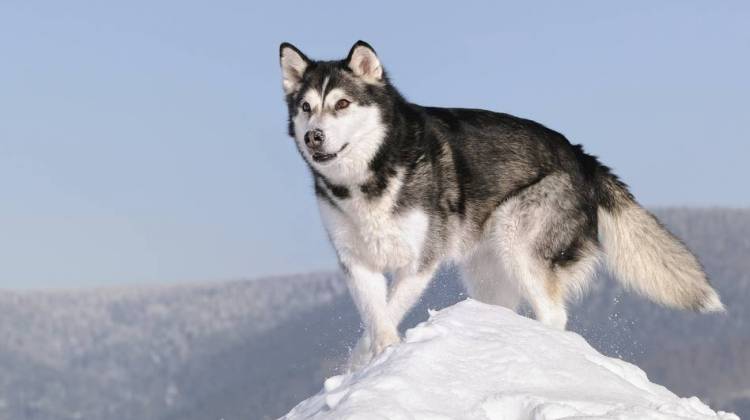Our four-legged friends suffer from many of the same cancers that we do. But one type of dog tumor acts like no other: It's contagious.
The tumor spreads from one pooch to another when the dogs have sex or even just touch or lick each other.
"It's is a common disease in street dogs all around the world," says geneticist Elizabeth Murchison at the University of Cambridge. "People in the U.S. and U.K. haven't heard of it because it's found mostly in free-roaming dogs in developing countries."
Now this strange disease just got even stranger.
Murchison and her colleagues found that the infectious cancer is a living fossil. The modern tumors contain the DNA of an ancient pooch that hung out with prehistoric people thousands of years ago.
The contagious cancer first arose about 11,000 years ago in a wolf-dog hybrid that's most closely related to an Alaskan malamute, Murchison and her team report Thursday in the journal Science.
About 500 years ago, the tumor jumped from continent to continent via the world's pooches. And the cells have been living and hiding out in dogs ever since.
"When I look down the microscope and see these cells that came from a dog 11,000 years ago, it boggles my mind," Murchison tells Shots." It's really incredible."
So how did she figure all that out?
To start off, she and her team sequenced the DNA of tumors from two dogs: a cocker spaniel from Brazil and an aboriginal camp dog in Australia. They then compared the genetic patterns of the tumors with more than a thousand modern dog breeds.
Their conclusion?
The contagious cancer first appeared in a dog that looked something like an Alaskan malamute: grey-brown or black coat, short straight fur, pointy ears and a medium-size snout.
But this pooch probably wasn't as cuddly as a malamute. The ancient doggie also contained a fair number of wolf genes, Murichson found.
"The dog was around during the early days of domestication," she says. "But it seemed to be relatively inbred and had some signs of domestication." For instance, the dog probably could digest carbohydrates, she says, which is a trait found in Fido but not his wolf cousins.
Veterinarians have known about the contagious dog cancer since the late 1800s, Murichson says. The disease even offered scientists one of the first tools for studying live cancers.
"When a Russian scientists figured out the tumors were transmissible in the 1870s, it was a hugely important insight," Murichson says. "At the time there wasn't a model for [studying] cancer. Scientists could only study it in people who had already died."
After the discovery, she says, many labs started trying to figure out how cancer arises and spreads in the body.
Now Murchison hopes the genome of the dog tumor will help solve one of the major outstanding questions about human cancers: how they evade the immune system.
"We found mutations that confer that ability in the dog tumor," she says. "They could potentially offer clues for human cancers, as well."
9(MDEwMDc1MzM3MDEzNDczOTA0MDc1MzViMQ001))
 DONATE
DONATE








 View More Programs
View More Programs

 Support WFYI. We can't do it without you.
Support WFYI. We can't do it without you.